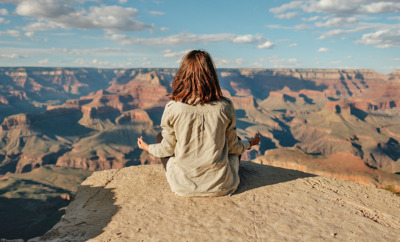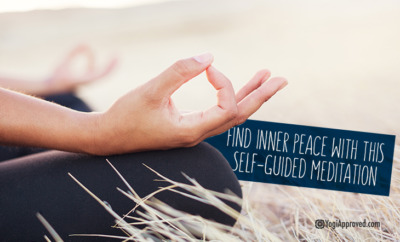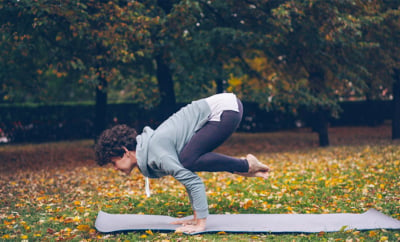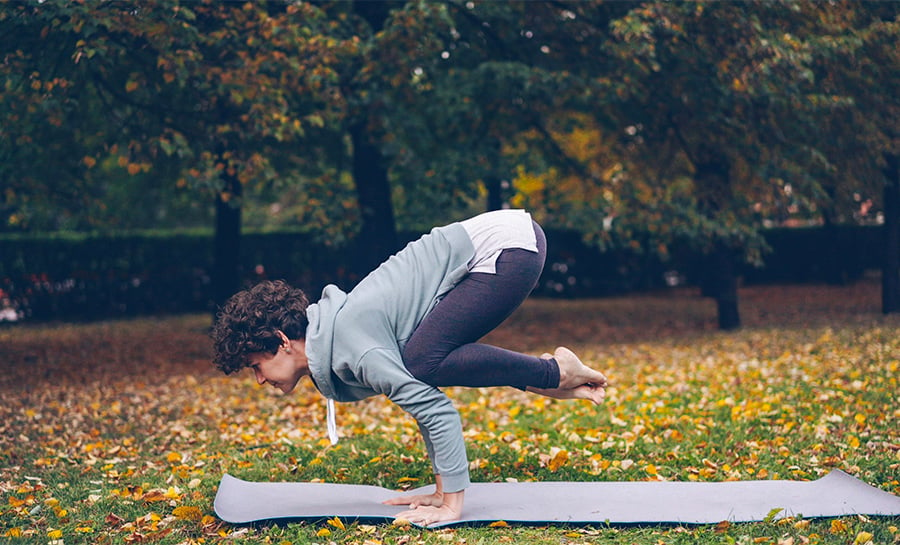Learn How to Practice Breath of Fire Pranayama In This Quick Tutorial

Breath of Fire Featured
Breath of Fire is one of the most popular forms of Pranayama. The Breath of Fire Pranayama practice helps release toxins in your body and also brings a wave of energy – great for practicing at the beginning of your yoga practice – or day!
Pranayama, or conscious breathwork, is an amazing practice to not only strengthen our lungs and improve our blood circulation, but to also move energy within the body.
There are many different types of Pranayama techniques to benefit our body, and they are an amazing addition to our yoga practice.
Breath of Fire is a powerful form of Pranayama practice often used in Kundalini Yoga. Breath of Fire can be taught as both a beginner pranayama or as an advanced pranayama because it is a simple yet powerful practice.
Contraindications: Do not practice Breath of Fire if you are pregnant, have a respiratory infection, high blood pressure or cardiac issues, vertigo or any spinal issues. Consult your healthcare provider if you have any questions or concerns before trying for the first time.
The Benefits of Breath of Fire
Breath of Fire Pranayama creates heat within the body, increase circulation, balance the nervous system and increase concentration. Breath of Fire also has a strong purification effect on the energy system within our body – especially on the second chakra and the seventh chakra.
Breath of Fire is often confused with Kapalabhati Pranayama or Skull-Shining, but there is a fundamental difference.
In Skull-Shining breath, you draw our belly button into your spine to rapidly and powerfully exhale through your nostrils. Your inhale, as a result, is a natural and automatic response.
In Breath of Fire, both the rapid inhale and exhale are intentional, with your belly activating as two distinct, but harmonious actions. You can also practice Breath of Fire through your nostrils or out your mouth (like a dog panting).
Ready to try it for yourself? Read on!
Follow These Steps to Practice Breath of Fire Pranayama:
Step 1.
Begin seated with your hands resting on your knees or practice a mudra of choice.
Step 2.
Inhale. This is a quick, forceful inhale into your lungs. The inhale is of medium-intensity but without over-exerting yourself.
Step 3.
Exhale. Without pausing, exhale with an equally matched level of force as your inhale. Be sure the inhale is the same length and depth as the exhale.
Step 4.
Repeat. Continue these dynamic inhales and exhales without pausing. The inhales should seamlessly merge into the exhales, and vice versa.
Step 5.
Activate your core. Once you are comfortable with the flow of the breath, bring your attention to your core muscles. Begin to use your core to power the breath.
Step 6.
Complete. To end your Breath of Fire practice, draw in a long and deep inhale and slowly release your hands down by your side. As your breath becomes neutral, set an intention to clear any leftover or blocked energy around you.
Breath of Fire Pranayama Tips and Modifications:
- Breath of Fire does not focus on thoroughly filling each area of the lungs. Breath of Fire focuses on the controlled pull of the inhale and push of the exhale
- Find a natural level of speed and force for each breath. There should be no shortness of breath and no pause between the inhale and exhale
- If you do experience difficulty or shortness of breath, remember to experiment with the speed. It is best to start your Breath of Fire practice slowly until you are comfortable, and gradually increase your speed when you feel ready
- If you have a solid Breath of Fire practice, you can begin to move energy within your body to the Crown Chakra by focusing your attention on the top of your head
- Try practicing for 30 seconds and slowly work your practice towards two minutes over time
What You May Experience and Final Notes About Breath of Fire Pranayama
Breath of Fire moves a lot of energy within your body which can be felt and experienced physically. It is common to experience the following:
- A “tingling” sensation on your face, stomach, or chest
- A lightness or “clearing” sensation at the top of your head
- A warm or pleasant sensation in your second chakra
- If your eyes are closed, flashes of color can be seen in your inner vision
Overall, Breath of Fire Pranayama doesn’t take that long to master, and it comes with amazing benefits. This form of Pranayama is a great addition to your wellness routine to build internal heat, move blocked energy or begin your yoga practice with a powerful Pranayama practice.
Take This Yoga Class to Move On
Have any questions about this breathing practice? Please share in the comments below – we love hearing from you!


This Month's Letter
From the Editor
Monthly motivation and food for
thought from our founder.


























